
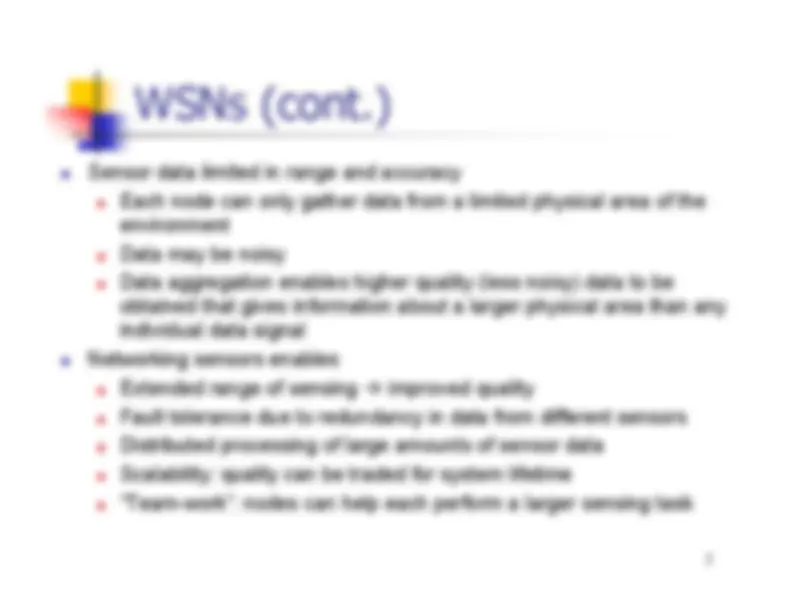
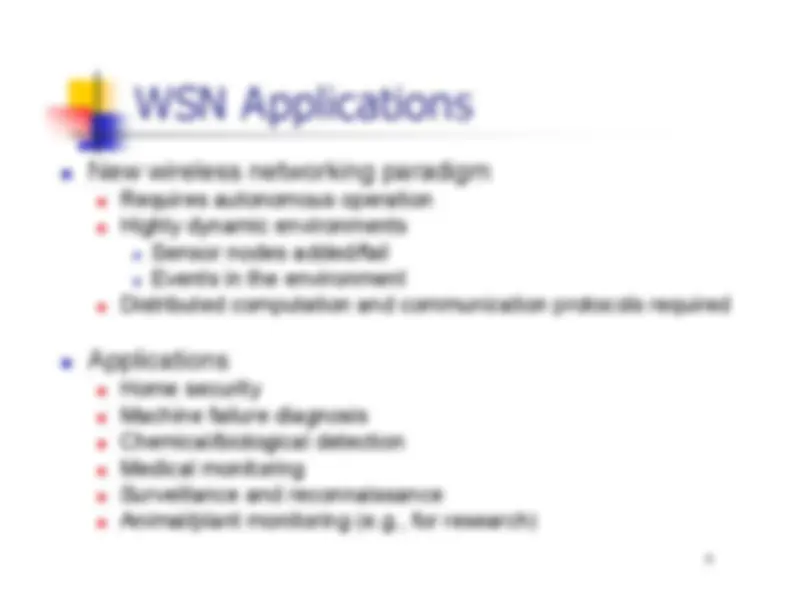
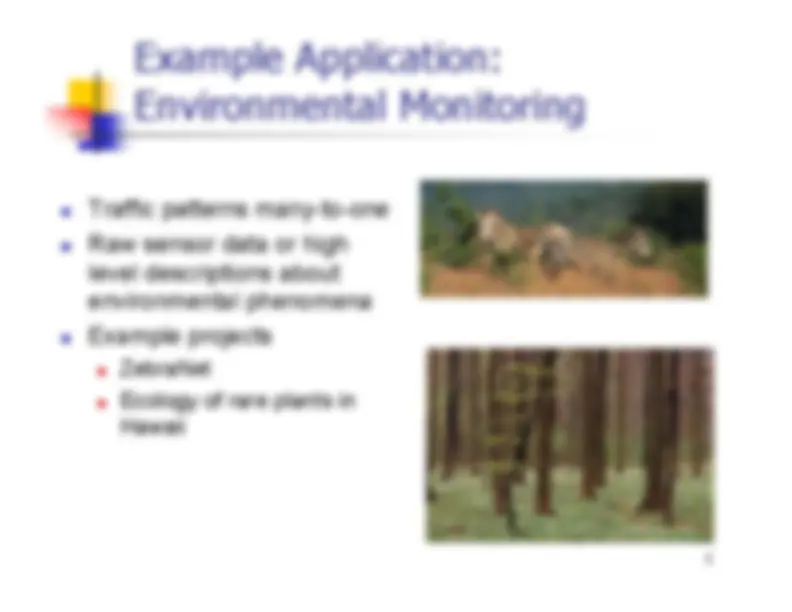
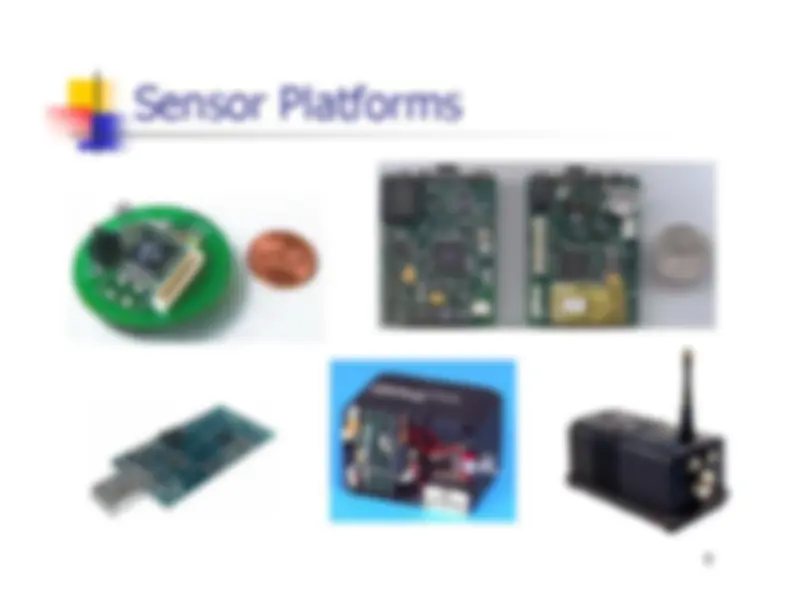
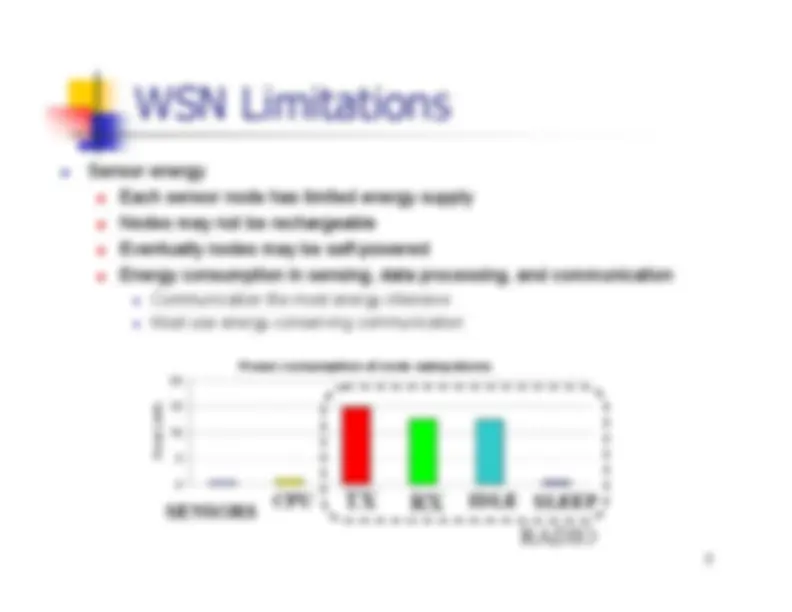


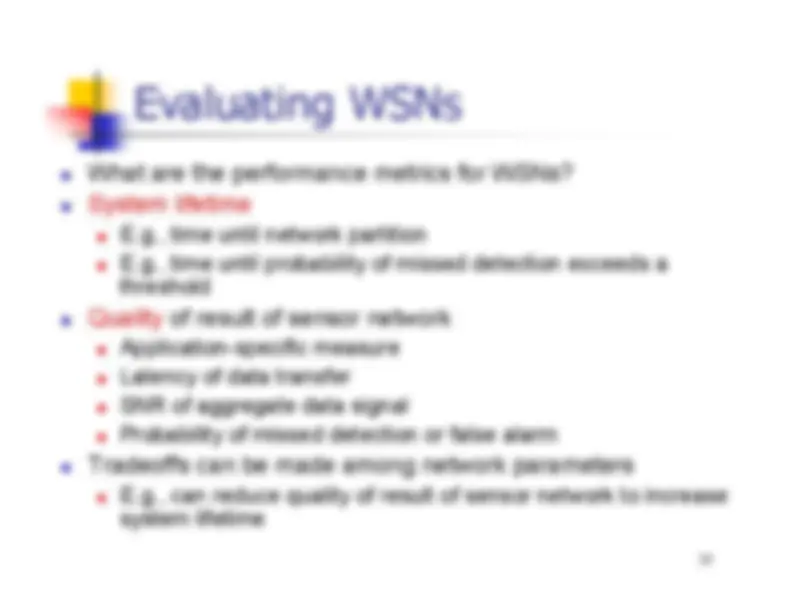
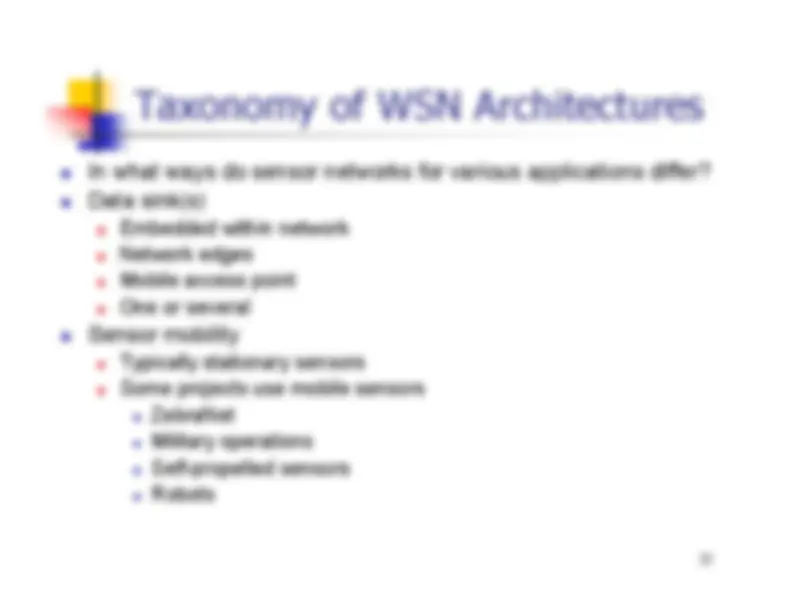

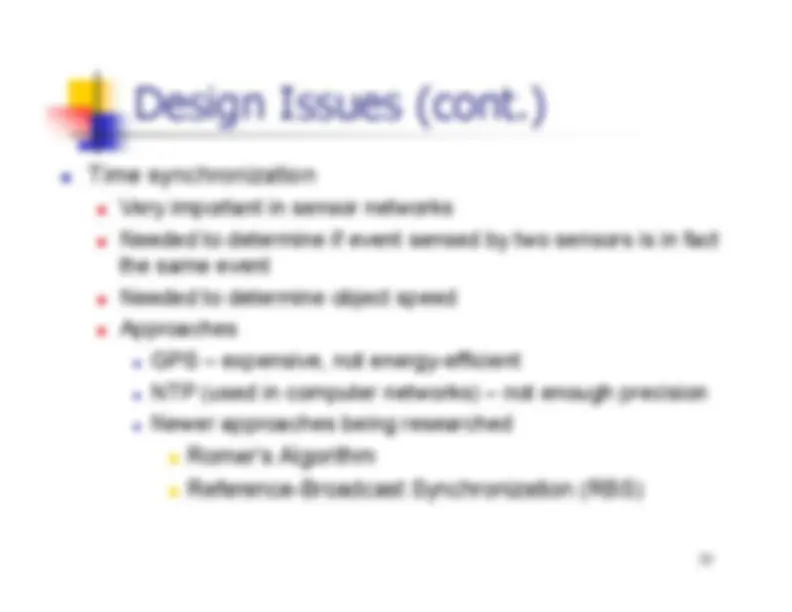


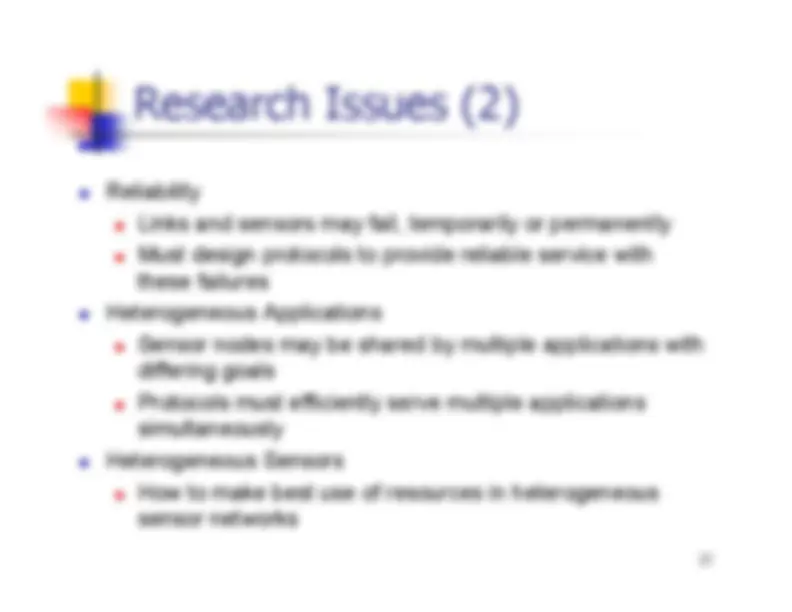

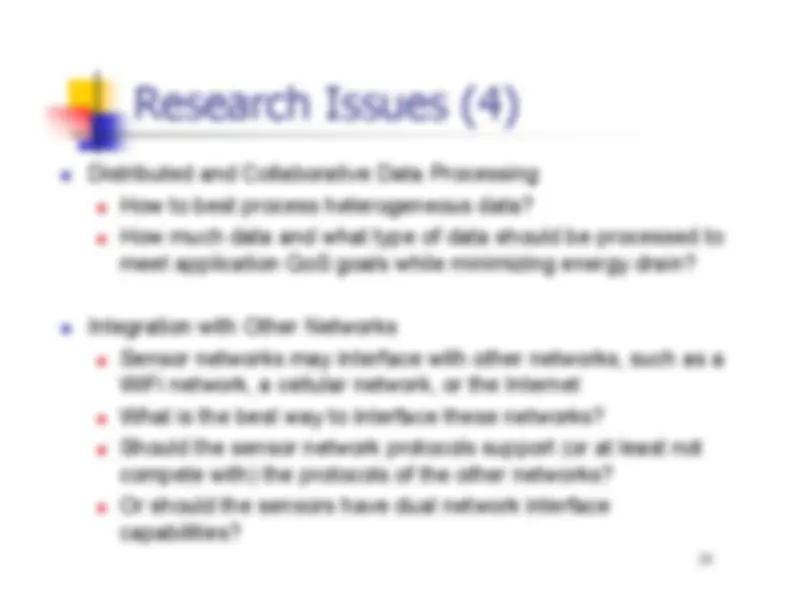



Study with the several resources on Docsity

Earn points by helping other students or get them with a premium plan


Prepare for your exams
Study with the several resources on Docsity

Earn points to download
Earn points by helping other students or get them with a premium plan
Community
Ask the community for help and clear up your study doubts
Discover the best universities in your country according to Docsity users
Free resources
Download our free guides on studying techniques, anxiety management strategies, and thesis advice from Docsity tutors
Wireless Sensor Networks, WSN, WSN Applications, Sensor Platforms, WSN Limitations, MANET, Design Factors, Evaluating WSNs, WSN Architecture, Design Issues, QoS Management, Time Synchronization, Localization, Cross Layer Architectures, Research Issues
Typology: Slides
1 / 25

This page cannot be seen from the preview
Don't miss anything!


















Reading: • “Wireless Sensor Networks,” in Ad Hoc Wireless Networks: Architectures and Protocols, Chapter 12, sections 12.1-12.2.
I. Akyildiz, W. Su, Y. Sankarasubramaniam and E. Cayirci, “A Survey on Sensor Networks,” IEEE Communications Magazine, August 2002. - D. Estrin, R. Govindan, J. Heidemann, and S. Kumar, "Next Century Challenges: Scalable Coordination in Sensor Networks," Proc. Mobicom '99, August 1999. - “Wireless Sensor Network Protocols” by M. Perillo and W. Heinzelman. To appear in: Fundamental Algorithms and Protocols for Wireless and Mobile Networks, CRC Hall, 2005.
Microsensors Low power, cheap sensors Sensor module (e.g., acoustic, seismic, image) A digital processor for signal processing and network protocolfunctions Radio for communication Battery-operated Sensors monitor environment Cameras, microphones, physiological sensors, etc. Gather data for some purpose Hundreds or thousands of nodes scattered throughout an environment Each sensor can collect data Data routed via other sensors to a sink or base station node
Traffic patterns many-to-one Raw sensor data or highlevel descriptions aboutenvironmental phenomena Example projects
Example platforms Smart Dust (UC Berkeley) Berkeley Motes Telos Motes (MoteIV) iBadge (UCLA) WINS (UCLA)
Communication
Many-to-one traffic pattern One-to-one traffic pattern Data-centric Address-centric Very constrained energy and bandwidth Constrained energy and bandwidth Cooperative Competitive Application-specific QoS QoS: delay, etc Typically immobile Typically mobile Large-scale Small-scale Require self-configuration Require self-configuration Unreliable communication Unreliable communication
Deployment: random or deliberate placement of nodes Changes in topology during network operation
Sensor functions: sensing, communication, dataprocessing All require energy
What are the performance metrics for WSNs? System lifetime
Quality of result of sensor network
Tradeoffs can be made among network parameters
Memory Processing Transmit power (fixed vs. variable) Locations/density
Event-driven applications Continuous data generation Query-driven applications
Cooperative nature of sensor networks (fairness not an issue) Exploit traffic patterns Energy efficiency extremely important Reduce idle listening Reduce unnecessary reception
Different traffic models Data dissemination rather than point-to-point routing Data-centric rather than address-centric Location-aware sensors Resource-aware routing needed Exploit local aggregation
Time synchronization
Romer’s Algorithm Reference-Broadcast Synchronization (RBS)
Localization Important for same reasons as time synchronization Often times, only relative position is necessary GPS is overkill and unattractive for energy reasons RSSI used to infer distances Time of Arrival (ToA) Time Difference of Arrival (TDoA) Angle of Arrival (AoA) Sensor can find its own location using received beacons Sensor can have other nodes measure its location Sensor sends beacon message and neighbors use trilaterationbased on signal strength measurements Problem – small scale fading